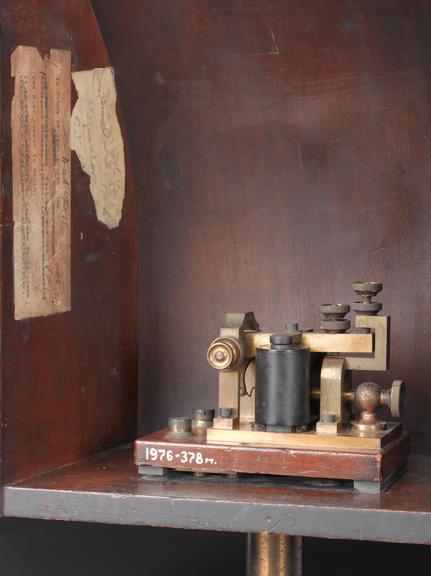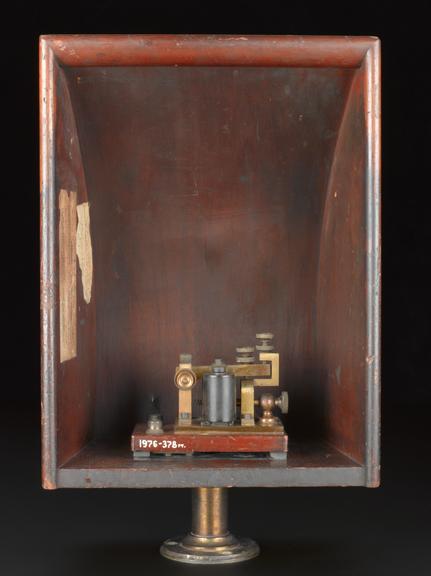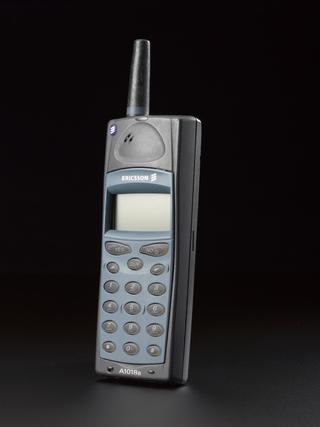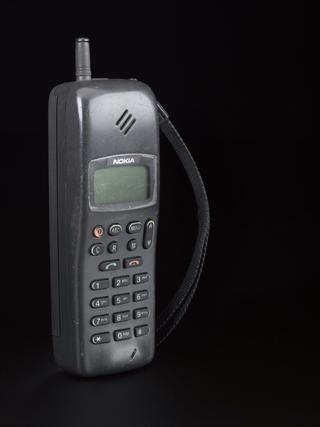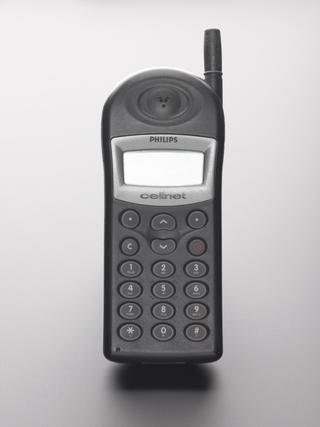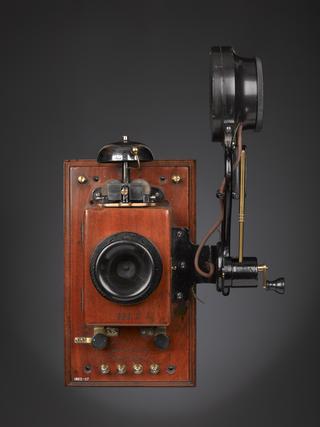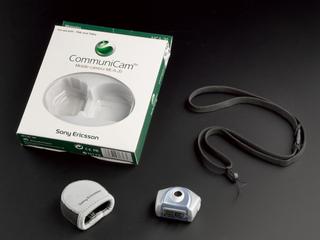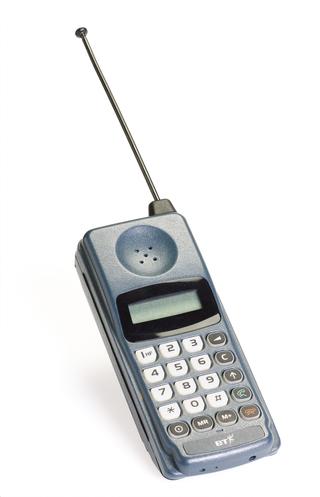Telegraph sounder and sounder-screen, 1850-1950
Telegraph sounder and sounder-screen, unknown maker, 1850-1950. Telegraph sounder with large, dark brown wood screen.
More
Morse code was the standard code for communicating by telegraph. The code uses a series of short and long connections in the electric current, usually called 'dots' and 'dashes'. These dots and dashes could then be decoded to reveal the message being transmitted. A telegraph sounder comprises a spring-loaded metal arm, pivoted near the middle. At one end is an electromagnet and at the other, an anvil. When a current passes, the electromagnet pulls the arm down, making a loud 'clunk'. When the current ceases the arm springs back against the anvil with another clunk. A dash is about three times as long as a dot, so the time interval between clunks indicates the dot or dash. The arrangement freed the operator to write down the message as it was being received. The default status for sounders was 'on', so that operators always knew it was working, and could easily identify if there was a fault in the wire. The sounder screens were used to project the sounds towards the operator, which was particularly useful in noisy offices.
- Materials:
- brass (copper, zinc alloy) and wood (unidentified)
- Object Number:
- 1976-378/1
- type:
- telegraph
- Image ©
- The Board of Trustees of the Science Museum




